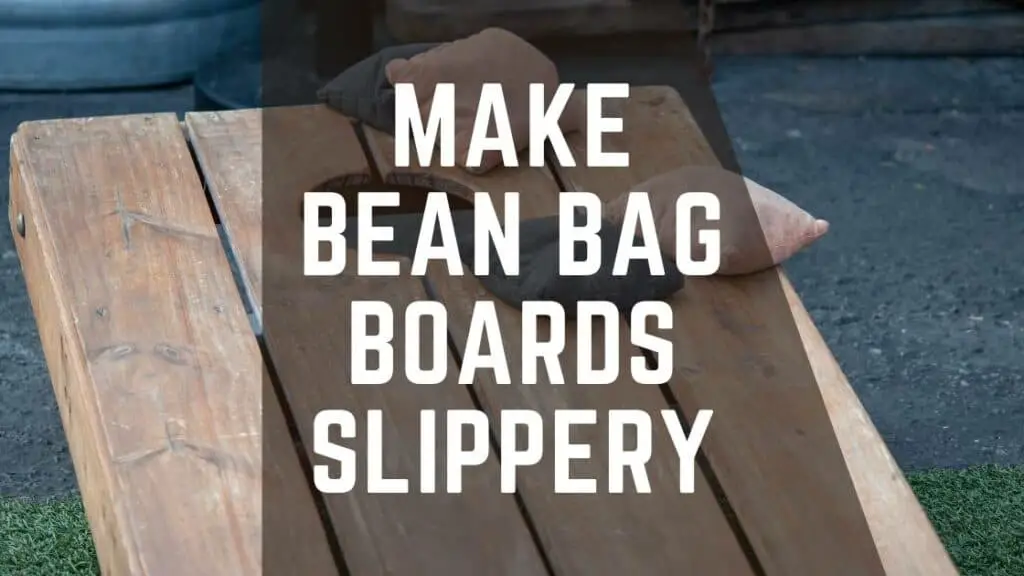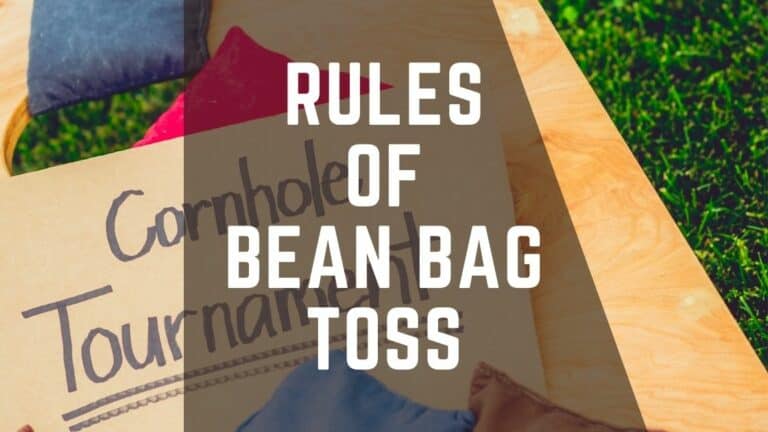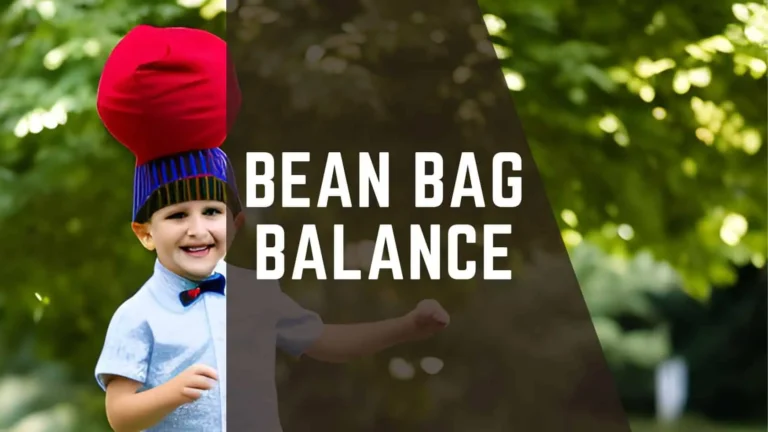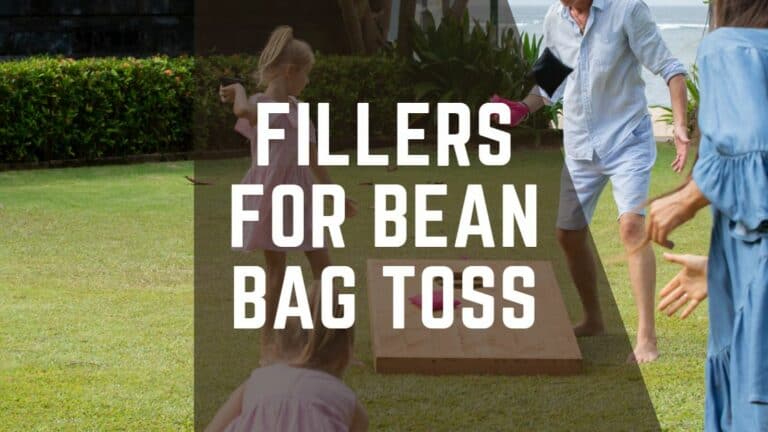5 Tips To Make Bean Bag Boards Slippery
Slipperiness is an essential property of a bean bag toss board. It should be free from any blemishes and damages because these things can disrupt the bean bag’s slide. No one wants to end their game by putting all bean bags on the board besides the hole. That’s why players always look for the smooth board and reject rough boards.
Most players spend a lot of time caring for their cornhole boards, especially customizing slipperiness levels. Painting with high gloss, latex paint, and polishing is the most well-known technique used to enhance the slippery property of the cornhole board.
The frictionless slippery board helps to slide bean bags into the hole. The smooth surface helps to knock out the opponent’s bags and throw your bags resting near the hole into the hole. So, the slippery or slick property board adds extra color and enjoyment to the bean bag toss game.
But the common issue is how to make bean bag boards slippery? Before discussing this further, let’s check how do you check whether your cornhole board has enough slipperiness?
What do you think, are there any scale to measure it?
Yes, of course!
First, check your board slipperiness level before moving into the bean bag board finishing. Just try the below simple method.

Table of Contents
Slide Test
Here you can take two types of bean bags to check the cornhole board.
- 16-46′ size, brand new 100% duck bean bags or
- 18-48′ size, gently used 100% duck cloth bean bags
Besides the bean bags, take one measuring tape and a cornhole board.
How Does The Slippery Test Work?
Step 1: Setup Cornhole Board.
The backside of the board should have 12 inches gap, and the front side should have 3.5 inches with the ground.
Step 2: Put your bean bag on the top left corner of the cornhole board.
It would be best to pat and flat the bean bag. Then place the duck cloth side on the top left corner without overhang.
Step 3: Set the measuring tape at the back of the board.
You should open the tape from the ground to 40 inches in height.
Step 4: Slowly and gently lift the backside of the cornhole board.
At the initial level, your board fixes at 12 inches in height. Here, you should gradually raise it from that 12 inches level.
Step 5: Check the tape measure; that bean bag starts to move.
Check these measures in the below table. Then you can get a clear idea that your bean bag board is slick level.
| Measure when bean bag moves (inches) | Conclusion |
| 16 – 18 | Well polish furniture board |
| 18 – 26 | Slick cornhole board |
| 26 – 36 | Semi-slick cornhole board |
| 36 – 46 | Sticky |
| 46 and above | Highly sticky |
If you use a broken corn bag (not brand new), add 2′ to each figure and check your board slipperiness level.
The various players need various slipperiness. Because of that, if you cannot be satisfied with the current Slipperiness level, do not worry. There are several solutions to solve that matter. Just check them!
Tips to Make Bean Bag Boards Slippery
Tip #1 Use Fine Sandpaper
The roughness is a significant issue that causes to make cornhole boards less slippery. So, to eliminate that, you can use some tips.
The 320 grit or higher grit sandpaper is the easiest way to polish your cornhole board. Not only that, it is the cheapest way to do this task.
You have to smooth the bean bag board manually or mechanically using fine sandpaper. Do sanding over decals. Then clean the wood dust. Make sure your board is free from any foreign material, and apply the final coat of poly. After that, let them dry for 72 hours.
Now, your board is ready to play!
Tip #2 Use Polyurethane
Polyurethane is the most common product used to finish cornhole boards. This comes with two different product types such as oil-based and water-based.
If you choose water-based paint, it will dry quickly. And also, it will leave a clear coat on a bean bag board’s surface.
The oil-based coats are more durable than water-based ones. Also, oil-based coats need more time to dry, and they will give amber yellow color to the cornhole board. Moreover, the oil-based Polyurethane is best for the decal and stained boards.
To get ideal results, apply 3,4 coats on the cornhole board. Wait sometime between each coat and let them fully dry. After that, you can use the next paint coat.
After applying all coasts, finish the board using 320 grit sandpaper. This is a bit of a time-consuming process. However, you can get great results by applying this method.
Water-based products are also a good alternative. It is easy to use and will not change your cornhole board look. Also, after applying this paint to the cornhole, you can use it without any modifications for a long time.
Tip #3 Use Polyacrylic
You can use polyacrylic or poly to coat the cornhole board. Due to its fast-drying and water-based property, it can protect the board’s surface. On the other hand, polyacrylic is cheaper than Polyurethane.
Other than the above benefits, you will offer a pack of some other benefits by using polyacrylic. So, if you need a glossier and shining look cornhole board, choose this.
This polyacrylic is ideal for light wood boards such as maple and birch. When you are applying poly, you may see some bubbles there. But, you do not need to worry about them too much. They will disappear when drying.
Also, the polyacrylic coat looks thin and runny. But you do not need to think about it too because it can give enough slippery level to your cornhole board.
Further, keep in mind that polyacrylic is far smelly and toxic. So, use them carefully.
Tip #4 Kernal Corn Powder
Do you know you can enhance the slippery level of the board without doing anything?
Confuse? Read and know-how!
Most bean bags are filled with kernel corns. Over time, these natural seeds break down and create corn powder. When you toss the bean bags and play the game, this powder automatically releases onto the bean bag board.
So, it will allow sliding bean bags easier. On the other hand, these tiny particles reduce the friction level of the cornhole board. You feel a bit slippery after they spread on the cornhole board.
However, do not let this powder inhale. It will badly affect your health.
Tip #5 Add Olive Oil
Now you know the several methods to enhance the slipperiness of your cornhole board. Do you believe olive oil also can improve the slipperiness of the board?
Yes, it is true! Olive oil is an excellent solution for the varnish plywood cornhole board. On the other hand, olive oil is an environmentally friendly solution.
But you cannot apply olive oil on the unvarnished wood because it will absorb the oil. So, it will not give the expected results. Moreover, it can increase the stickiness of the wood too.
Final Thoughts
Before starting any cornhole tournament or match, you should check the slipperiness of the cornhole board. Because the slippery level will depend from board to board, therefore, play a couple of trial games before starting the match.
If its slipperiness level is not at a satisfying level, you can enhance it by using some tricks and tips. I hope now you have a good idea about it. The above methods enhance the slipperiness and protect the cornhole board from dust, humidity, and water.
So, apply this method and toss your bean bag. Surely you will experience pleasant and smooth tossing. Then share your fantastic experience with us! We love to know about your adorable hand-on experience!





